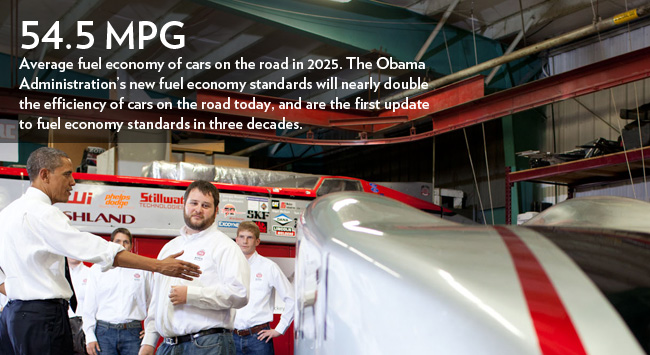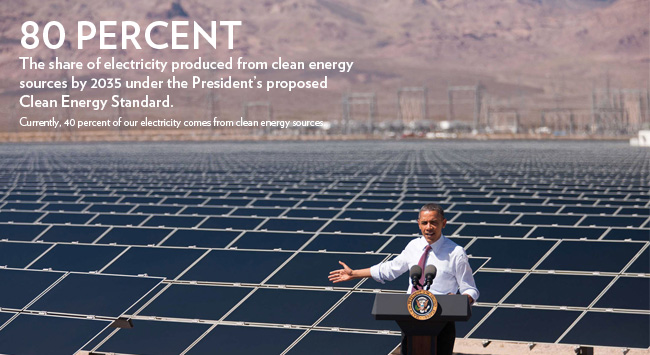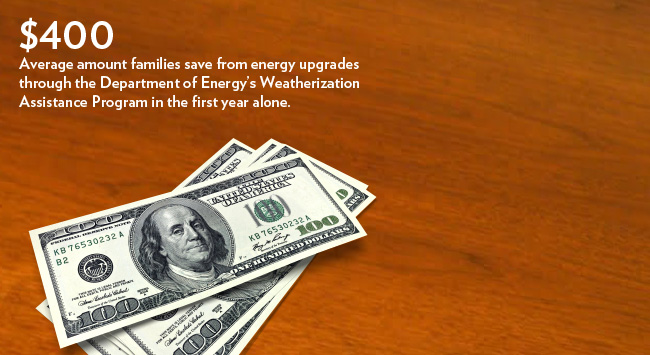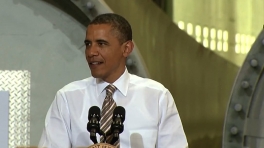Climate Change
The Obama Administration has taken a series of important steps to reduce the harmful emissions that contribute to climate change and pollute our water and air.

International Leadership
Under President Obama’s leadership, the United States has engaged the international community to promote sustainable economic growth and to meet the climate change challenge through a number of important venues, including:
Reducing Emissions through Clean Energy Investments and Standards
President Obama is pursuing a wide range of initiatives that reduce greenhouse gas emissions through clean energy technologies and policies. The Administration has made the largest clean energy investment in American history and these investments have allowed us to nearly double America’s renewable power generation since 2008.
For more information on these efforts, see Innovating Our Way to a Clean Energy Future
Monitoring Emissions

For the first time, the United States is comprehensively cataloguing greenhouse gas emissions from the largest sources – an important initial step toward measurable and transparent reductions in carbon emissions, which will reduce air pollution and protect the health and welfare of the American people. In January 2012, the Administration launched an online tool that makes comprehensive greenhouse gas emission data publicly available for 29 different industrial categories and other large sources of greenhouse gas pollution.
President Obama has also directed the Federal Government – the largest energy consumer in the U.S. economy – to reduce its greenhouse gas emissions from direct sources such as building energy use and fuel consumption by 28 percent by 2020. He also directed Federal agencies to reduce their greenhouse gas emissions from indirect sources, such as those from employee commuting, by 13 percent by 2020. By meeting these goals, Federal agencies can save up to $11 billion dollars in energy costs and eliminate the equivalent of cumulative 235 million barrels of oil over the next decade. In 2011, the Administration released the first-ever comprehensive Greenhouse Gas (GHG) Emissions Inventory for the U.S. Government, allowing agencies to leverage data to gauge the effectiveness of their renewable energy investments and their energy and fuel efficiency efforts.
Climate Change Adaptation
At the request of President Obama, an interagency Climate Change Adaptation Task Force has crafted recommendations for how Federal agency policies and programs can better prepare the United States to address the risks associated with a changing climate. Federal agencies are drafting their first-ever climate change adaptation plans to help ensure smart decisions that protect our investments and safeguard the health and security of our communities, economies and infrastructure from the impacts of severe weather, rising sea levels and other changing climate conditions. The Task Force has also helped develop national adaptation strategies to protect freshwater resources and fish, wildlife and plants.
Learn More About the Taskforce
Climate Change Science and Education

Through the U.S. Global Change Research Program (USGCRP), U.S. government scientists are conducting world-class research on global climate change. The USGCRP is a collaborative effort involving 13 Federal agencies to evaluate the current and future impacts of climate change, inform policy-makers and the public about scientific findings, and investigate effective ways to reduce greenhouse gas emissions and deploy cost-effective clean energy technology.
Learn More About the Research Group
Recent News
- October 5, 2012 at 5:00 PM EDT
Weekly Wrap Up: Operation Educate the Educators
Here's a quick glimpse at what happened this week on WhiteHouse.gov.
- October 4, 2012 at 12:00 PM EDT
National Energy Action Month
It's National Energy Action Month. Learn how President is pursuing an all-of-the-above strategy to help the United States achieve energy independence.
- October 3, 2012 at 1:13 PM EDT
Fueling American Entrepreneurship With Open Data
For decades, entrepreneurs have used government data from Global Positioning Systems, weather monitoring stations, and other sources to power their products and services.














